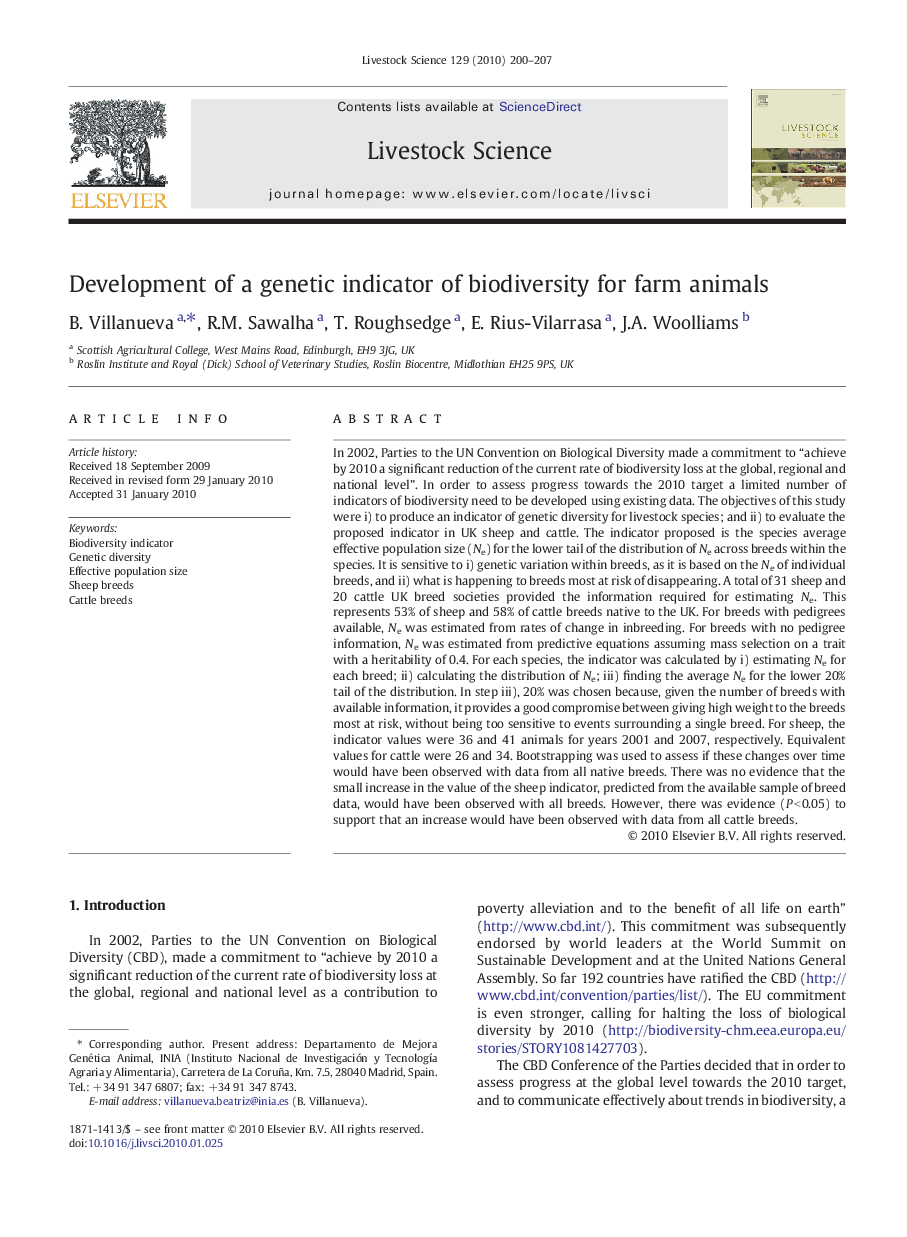| Article ID | Journal | Published Year | Pages | File Type |
|---|---|---|---|---|
| 2448021 | Livestock Science | 2010 | 8 Pages |
In 2002, Parties to the UN Convention on Biological Diversity made a commitment to “achieve by 2010 a significant reduction of the current rate of biodiversity loss at the global, regional and national level”. In order to assess progress towards the 2010 target a limited number of indicators of biodiversity need to be developed using existing data. The objectives of this study were i) to produce an indicator of genetic diversity for livestock species; and ii) to evaluate the proposed indicator in UK sheep and cattle. The indicator proposed is the species average effective population size (Ne) for the lower tail of the distribution of Ne across breeds within the species. It is sensitive to i) genetic variation within breeds, as it is based on the Ne of individual breeds, and ii) what is happening to breeds most at risk of disappearing. A total of 31 sheep and 20 cattle UK breed societies provided the information required for estimating Ne. This represents 53% of sheep and 58% of cattle breeds native to the UK. For breeds with pedigrees available, Ne was estimated from rates of change in inbreeding. For breeds with no pedigree information, Ne was estimated from predictive equations assuming mass selection on a trait with a heritability of 0.4. For each species, the indicator was calculated by i) estimating Ne for each breed; ii) calculating the distribution of Ne; iii) finding the average Ne for the lower 20% tail of the distribution. In step iii), 20% was chosen because, given the number of breeds with available information, it provides a good compromise between giving high weight to the breeds most at risk, without being too sensitive to events surrounding a single breed. For sheep, the indicator values were 36 and 41 animals for years 2001 and 2007, respectively. Equivalent values for cattle were 26 and 34. Bootstrapping was used to assess if these changes over time would have been observed with data from all native breeds. There was no evidence that the small increase in the value of the sheep indicator, predicted from the available sample of breed data, would have been observed with all breeds. However, there was evidence (P < 0.05) to support that an increase would have been observed with data from all cattle breeds.
